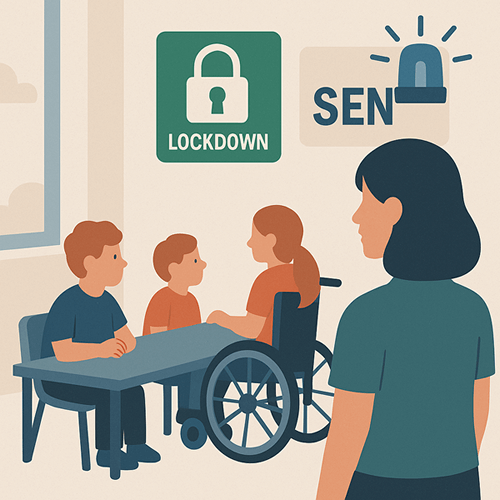SEN vs Standard School Lockdown Systems – What’s the Difference?

Every school needs a reliable method of keeping their staff and pupils safe in an emergency. However, for SEN schools, a one-size-fits-all lockdown system simply does not work. With Martyn’s Law making protective security a legal duty, it is now more important than ever to understand the differences in lockdown systems in SEN and mainstream settings. What a Standard School Lockdown System Looks Like In most schools, a standard lockdown system allows staff to: These systems are designed for rapid, building-wide responses. But in SEN environments, factors like sensory sensitivities, mobility needs, and one-to-one support mean the system must work differently. Lockdown Adaptation for SEN Schools An SEN lockdown system should prioritize clarity, calmness, and accessibility. Adaptations to include: It is not just about compliance; the aim is to ensure every pupil and member of staff feels safe, supported, and understood in a high-stress situation. How Martyn’s Law Reinforces the Need for Adaptable Systems Martyn’s Law will require schools to assess the risks and prepare proportionate protective measures, which for SEN schools equates to demonstrating that lockdown systems are effective and inclusive. With adaptable, user-friendly lockdown technology, schools can deliver on legislative expectations and reinforce safeguarding policies without causing undue alarm among students. Every school-whether mainstream or SEN-deserves a lockdown system that’s intuitive, clear, and keeps everyone safe. By focusing on accessibility, staff training, and compliance right from the start, schools can create safer environments that meet the standards Martyn’s Law confidently sets. For assistance with assessing or improving your school’s lockdown program, our experts will help tailor a solution to meet the unique needs of your site. Get in touch today!
